Williston’s Song of Songs
It is sung, with varying degrees of solemnity and competence, at solemn events like graduations and hockey games. If “Hail to Williston Northampton” is our recently adopted Alma Mater, then surely the much more venerable “Sammy” qualifies as our Alma Aviam. (That’s “Beloved Grandmother.” Don’t you regret not having taken Latin? But I digress.) At least one former Head of School thought the song and its associated traditions puerile and tried, without success, to suppress it. “Sammy” remains the Song that Would Not Go Away.
Link: Listen to the 2012 Caterwaulers singing “Sammy!”
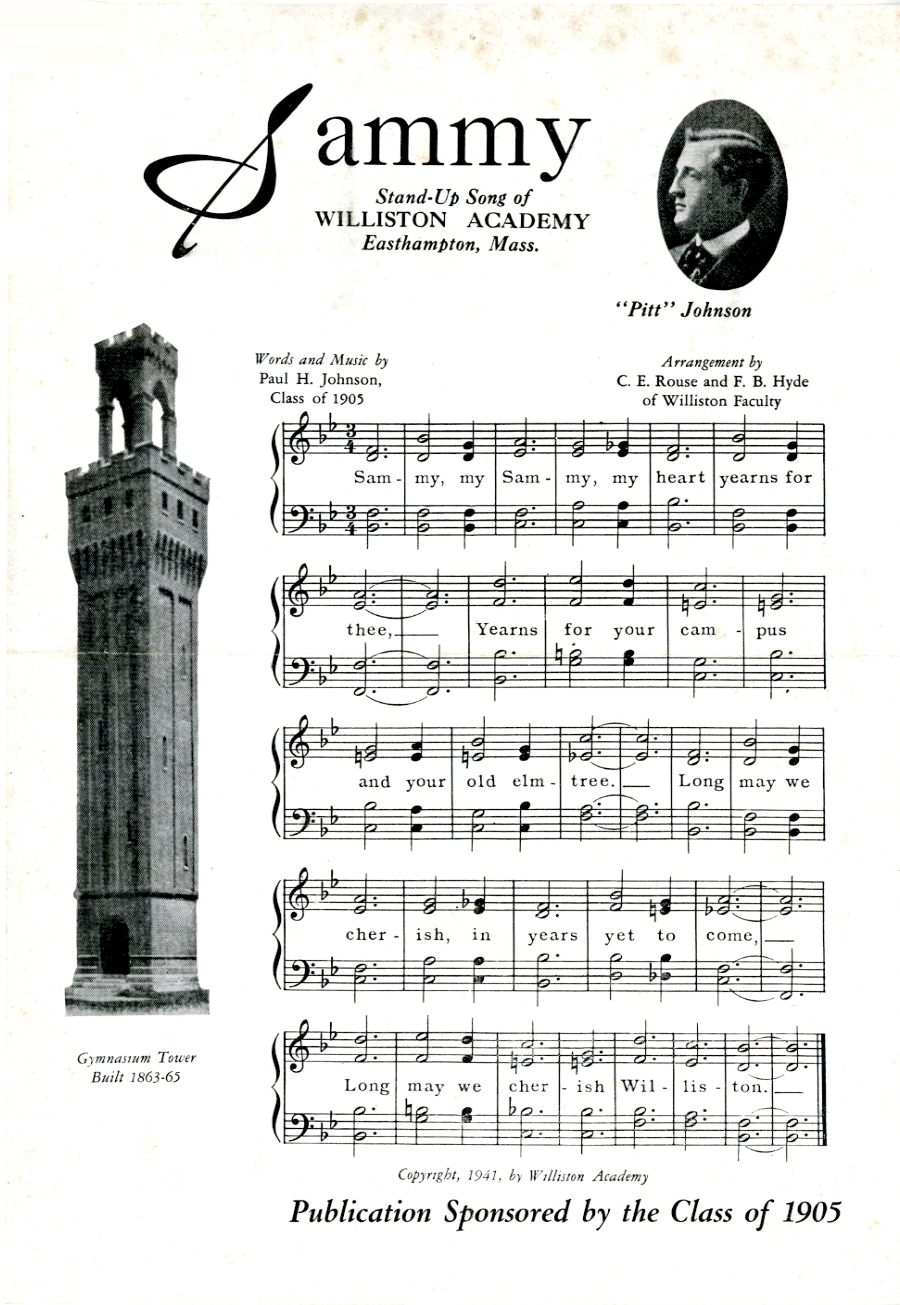
Link: A more rough-and-ready performance from Mem West, National Kazoo Day, 2019.
Venerable Williston Lore tells us that “Sammy,” our “stand-up song,” was written by Paul “Pitt” Johnson, class of 1905. This appears to be accurate, although it seems that the memory briefly slipped Johnson’s mind after he graduated. But in 1939, Alumni Secretary Howard Boardman asked for Johnson’s recollection. Pitt wrote back,
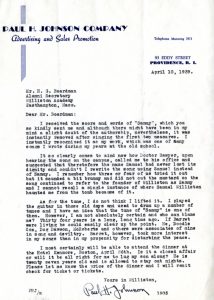
“Although there might have been in my mind a slight doubt of the authorship, nevertheless, it was instantly removed after singing the first two measures. I instantly recognized it as my work, which was one of the many songs I wrote during my years at the old school.” [The full letter is reproduced at right; please click on the image to enlarge it.]
Johnson continued, “It so clearly comes to mind now how Dr. Sawyer [Headmaster Joseph H. Sawyer], upon hearing the song on the campus, called me to his office and suggested that theretofore the name Samuel had never lost its dignity and couldn’t I rewrite the song using Samuel instead of Sammy. I remember how three or four of us tried it out but it sounded a bit brummy and didn’t cut the mustard so the song continued to refer to the founder of Williston as Sammy and I cannot recall a single instance of where Samuel Williston haunted me from the tomb because of it.”
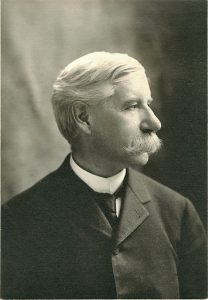
It is perhaps ironic that Johnson knew “Sammy” as his own when he heard the first two measures, since that is the one portion of the tune that he most certainly did not write. Fans of Gilbert and Sullivan operettas will recognize the phrase as having been lifted, note for note, from the Bridesmaids’ Chorus in Trial by Jury, at the words “Wear the flowers ’til they fade.” The show was wildly popular at the time Johnson “borrowed” the tune – and the cribbing was probably unconscious. As for the lyrics that so bothered Joseph Sawyer, it is likely that having written “Sammy, my Sammy, my heart yearns for thee,” Johnson needed a rhyme, and settled on “and your old elm tree.” Nothing we know of Samuel Williston suggests that he ever took an interest in trees, elm or otherwise. Yet, as has been detailed elsewhere, from this bit of doggerel entire school traditions have risen. (See “The Brand,” particularly toward the end of the article.)
Who Was Pitt Johnson?
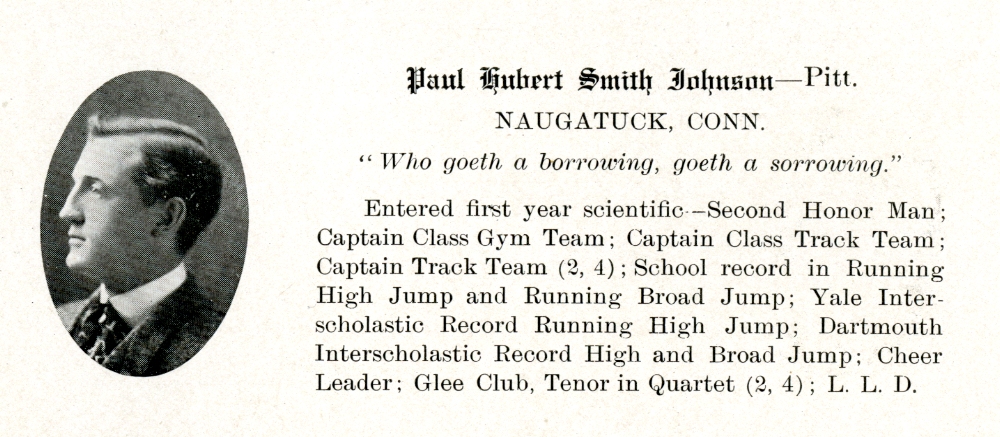
Paul Hubert Johnson (1881-1942) entered Williston Seminary in the fall of 1901, ostensibly in the equivalent of the 11th grade. He appears to have been in no hurry to leave; a class history in the 1905 yearbook The Log comments, “As our last year opened, we had a few bucks, principally from Unionville High School, where they can’t teach algebra, and the usual number of backsliders, foremost among whom is “Pit” Johnson, ex ‘04, ex ‘03.” The 1904 Log suggests that he was headed for The University of Michigan. He never got there. The Log also quotes Shakespeare’s Julius Caesar on Pitt’s behalf: “He talks too much; such men are dangerous.” His academic transcript suggests he was a competent student, who struggled a bit in history. But there is no explanation of why he stayed for four years instead of his intended two. At a time when the average age of a Williston senior was 19, Pitt was 24 when he finally decided it was time to go.
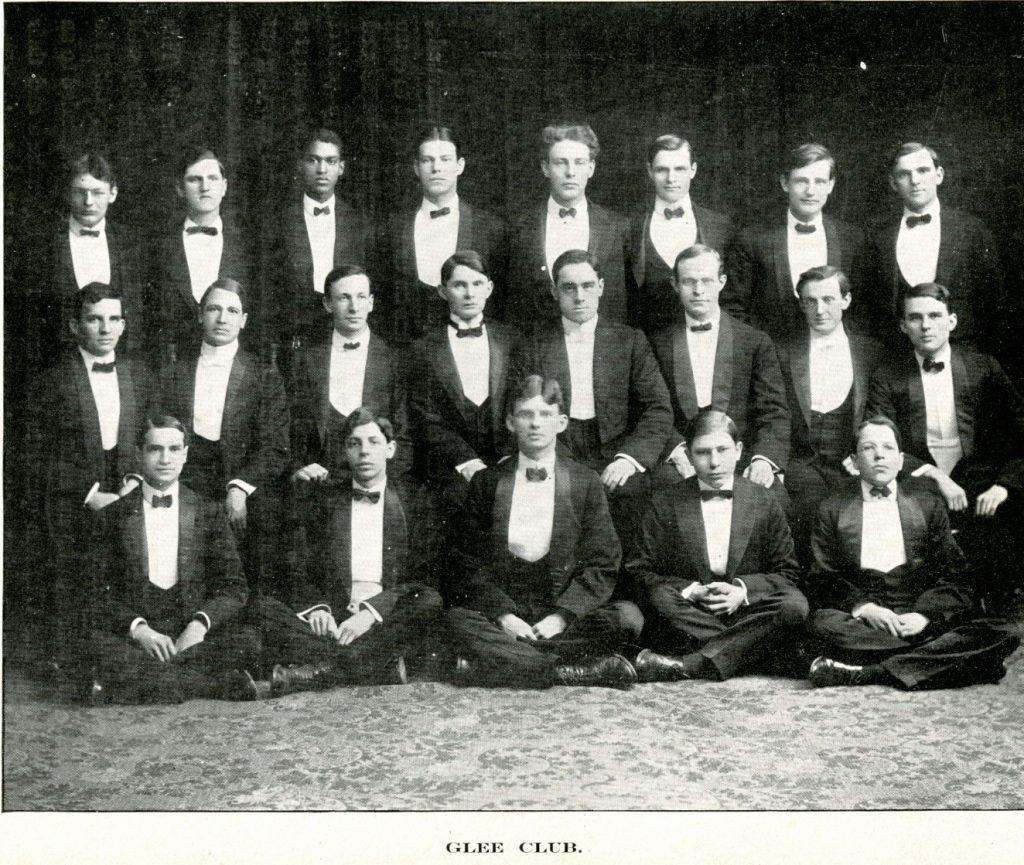
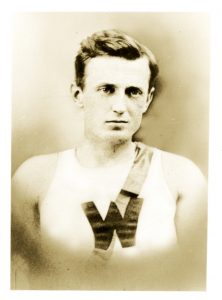
Pitt’s interests were track and unsurprisingly, music. His track career deserves special mention. He was a jumper. Contrary to the conventional wisdom that these events favor tall, long-legged athletes, Pitt stood only 5′ 6″. In the Spring of his first year, 1902, Johnson set several school records which stood for a very long time:
High Jump, indoor: 5′ 5″, March 1902
High Jump, outdoor: 5′ 8½”, June 1902
Broad Jump, 22′ 2½”, June 1902
117 years later, that Broad Jump (called the “Long Jump” today) mark has been surpassed only once, by Joseph Balloch ’32, in 1931 (22′ 10″). (The modern-era mark is held by Eni Ikuku, class of 2017, 21′ 4″) Pitt’s High Jump record remains 5th, all-time. The present-day holder is Michael Polk, class of 2018, who cleared 6′ 7″ in that year. Track coach Martha McCullagh adds this interesting perspective: “One of the reasons that high jump heights have improved is the better landing areas. When Pitt Johnson was jumping he would have most likely landed in straw. Jumpers needed to land more cautiously, so their jumping method was different. With the improved, safer, higher landing pits that we have now, jumpers can go over the bar backwards and land on their backs.”
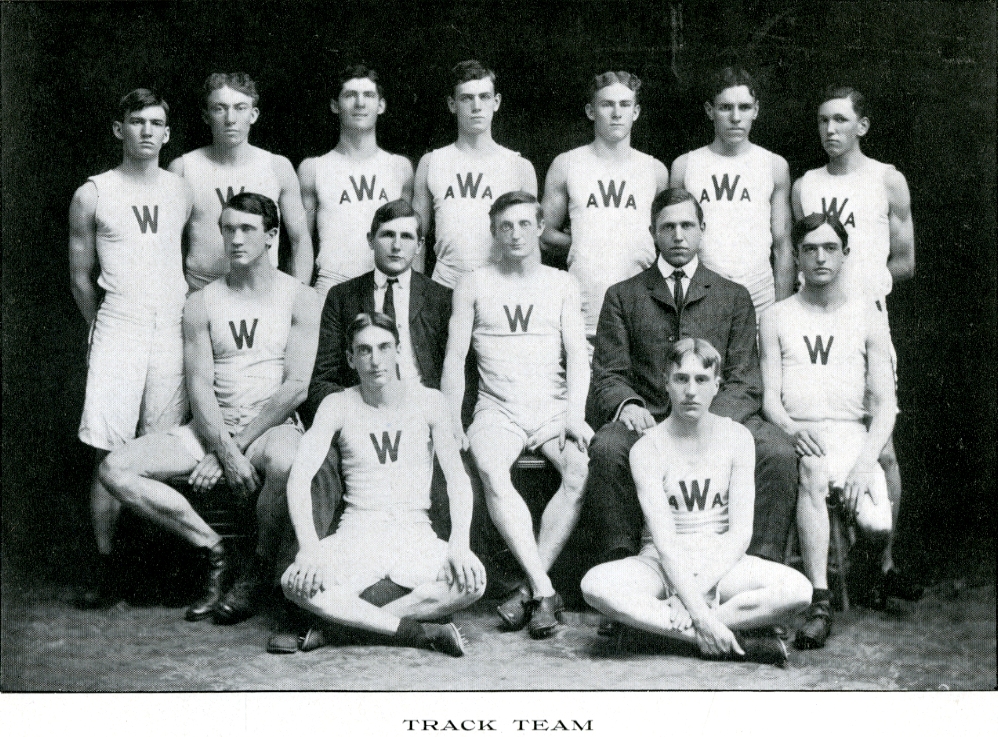
“Sammy” after Pitt, Pitt after “Sammy”
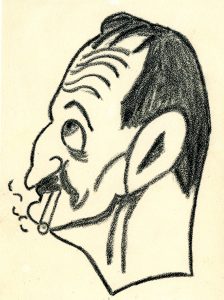
Pitt appears to have peaked as a jumper during that first year. He remained a leader on the track team, but never approached the extraordinary marks he’d set in 1902. He became a central figure in campus social life, and also joined L.L.D., a secret society so effective that its arcana remain unknown at Williston to this day. In the Log’s “Senior Statistics” poll, he was voted “Wittiest,” “Most Original,” “Done the Most for Williston,” and – could this have affected his track performance? – “Heaviest Smoker.” The 1905 yearbook suggests that his college choice was Trinity, in Hartford, but it appears he never attended.
Ultimately, he went into advertising and soon had his own agency, with offices in New Bedford and Fall River, Mass., and Providence, R.I. He was a natural organizer of alumni events and stayed involved with Williston throughout his life, despite having apparently forgotten the origins of “Sammy.” As he once noted, “I wrote a lot of songs.”
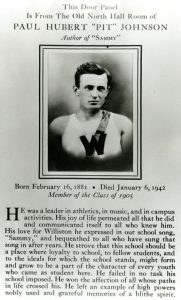
His, or his classmates’ recollection that “Sammy” dated from 1905 seems accurate. It does not appear in any Williston songbook prior to that date, including a “Williston Songs and Cheers” from 1904, but is ubiquitous from 1905 forward.
At the Williston Academy Centennial in 1941, a great fuss was made over (and by) the “Sammy Class of 1905,” but it appears that Pitt, deeply involved in organizing the event, was ill and could not attend. A plaque was placed on the door of Pitt’s old room, North Hall No. 39. When North Hall was torn down in 1956, a panel from the door found its way to the New Campus, and eventually to the Archives. Last summer, when the Archives were being moved to new quarters, we made the painful decision to discard the panel, which was full of dry rot. Pitt Johnson died in January, 1942
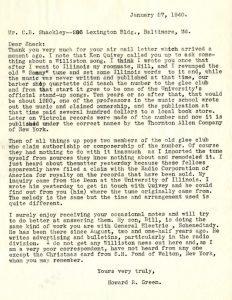
“Sammy’s” post-1905 life was not without controversy. Howard R. Green, class of 1909, headed to the University of Illinois where, by his own account, he and his roommate Harold V. Hill “revamped the old ‘Sammy’ tune and set some Illinois words to it.” The tune caught on at Illinois and “grew to be one of the University’s official stand-up songs.” In 1929 an Illinois music professor claimed authorship, and published the song. Later, two former members of the Illinois Glee Club asserted that they, not the professor, had written it. To this day, “Hail to the Orange” remains the Illinois Alma Mater. The authorship issue in Urbana-Champaign was settled in favor of Green and Hill, despite Green’s apparent attempt to get Pitt Johnson the credit he deserved. (One wonders how hard he tried. He was, after all, receiving royalty payments.) (A copy of Green’s letter to Brooks Shackley, class of 1908, explaining his role in the controversy, is at right.)

